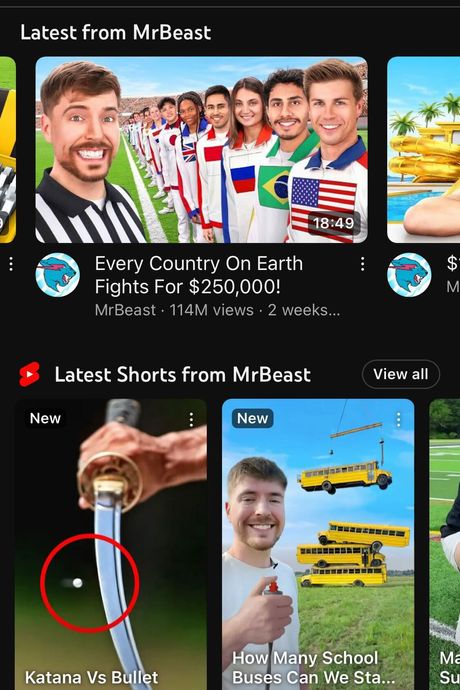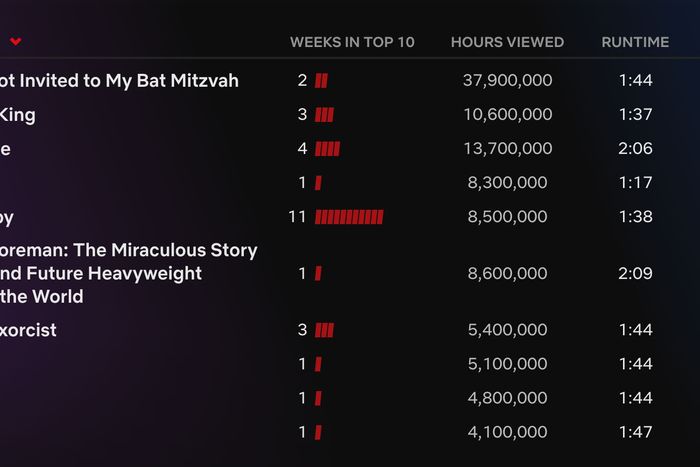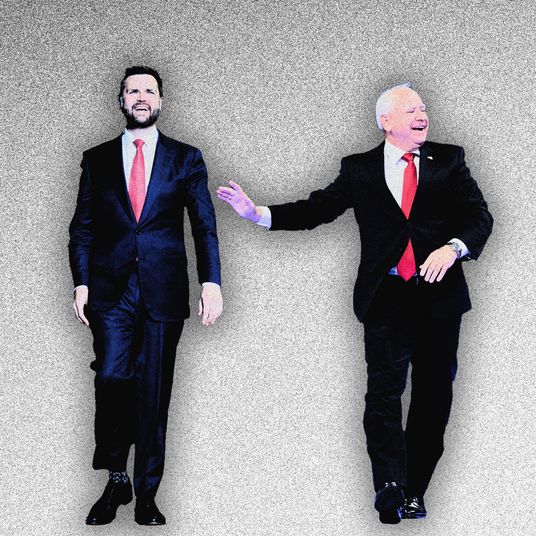
Donald Trump, the presumptivish Republican nominee for president in the 2024 election, did not attend his party’s first debate. His reasons for skipping the debates were strategically sound if not exactly overflowing with the spirit of democracy. “Why would I allow people at 1 or 2 percent and 0 percent to be hitting me with questions all night?” he asked on Fox in June. “The public knows who I am,” he wrote on Truth Social in August.
The former president evidently wasn’t so secure in his position that he could ignore the debates entirely. Instead, he hatched a plan to counter-program Fox’s broadcast with an interview on Tucker Carlson’s new vlog, hosted on X, formerly known as Twitter. The televised primary debate did decent ratings considering the absence of the former president, who is outpolling the rest of the field combined: 11 million viewers according to Nielsen or 12.8 million after you factor in streaming, according to Fox. According to Trump, though, his interview — again, a video broadcast embedded in a Tucker Carlson tweet — was nearly 20 times more popular than that. Not only that: It was the most popular social-media video of all time. “231,000,000 Views, and still counting,” wrote Trump on Truth Social the next day. “The Biggest Video on Social Media, EVER, more than double the Super Bowl.”
Trump has always had a way with numbers, obviously, be they real-estate valuations, vote counts, or crowd sizes. If it has a countable value, Trump will adjust said value until it feels right to him and his current situation. At first glance, this is just another Trump Number, wrong in fact but correct in MAGA spirit, existing in a sort of post-numeric mathematical space in which corrections only serve to strengthen the result. This time, though, the blame isn’t entirely on him. This misdirection started, instead, with cold, hard, digital metrics supplied by X itself.
A couple of weeks later, an official view number attached to the post containing the video has risen to 264.6 million views, or about the entire population of the United States minus California, New York, and, oh, let’s say Pennsylvania and Georgia. Is this number bullshit? Yes. But it’s borrowed, slightly plausibly deniable bullshit. Trump is just reporting the facts, here, at least according to Elon Musk’s social-media platform, which is itself unremarkable among its peers — from premium TV streamers to chum-level ad-tech vendors — in its routine production of questionably large numbers.
The internet promised, among other things, absolute audience surveillance, full measurability, and perfect knowledge of who was watching what, when, and for how long. What it delivered, instead, was metric tons of metric bullshit. Endowed with new powers of self-measurement, media companies, advertising firms, and online platforms have turned metrics into something approaching misinformation. They’re suspicious, context-free numbers, produced in private, selectively shared to tell just the right stories: 264 million peripheral “views” for an X video, on a platform whose owner is simultaneously talking about “unregretted user-minutes;” three billion “family daily active people” making some sort of contact with four distinct but overlapping social-media platforms owned by Meta; 83 million people “watching” a streaming movie by allowing it to play for at least two minutes, or yet another Netflix show “surpassing the billion-hour mark in viewing time.” In the abstract, metrics are powerful not just for what they convey — power, authority, popularity — but because they imply measurement by some sort of agreed-upon standard. In reality, online, they tend to supply math problems: vexing equations with missing variables and euphemistic names. There are numbers everywhere, and they mean nothing.
Musk’s X offers the following explanation for the composition of the “view” counts, which were added to all posts in late 2022. “View counts show the total number of times a Tweet has been viewed. With view counts, you can easily see the reach of your Tweets and the Tweets you see on the Timeline,” the site says. “Anyone who is logged into Twitter who views a Tweet counts as a view, regardless of where they see the Tweet (e.g. Home, Search, Profiles, etc.) or whether or not they follow the author.” How long does someone have to glimpse a post to count? Doesn’t say. Do multiple views by the same user count? Yes. Are these numbers auditable or checkable in any way? Of course not.
If this documentation is honest and complete, it still describes a situation in which a great deal of viewership is accounted for by people who neither intended to see something nor decided to engage with it when they encountered it anyway. Musk’s view counts seem to exist to create the impression of vitality on a platform that’s been struggling since he acquired it. But they’ve drawn scrutiny, too. In June, a goofy prompt tweet from a small account — “WITHOUT GOOGLING. Name a famous historic battle” — implausibly gathered more than a billion “views” from about a hundred thousand actual shares. Users have reported racking up views on locked test accounts with few followers.
With Trump’s video, Twitter ended up telling on itself with another internet metric: a distinct video view count number still visible in an old Twitter client suggested that, the day after the debate, the video had accumulated just under 15 million views. Which sounds like a lot! This type of view, however, is counted when a user plays the video for “at least 2 seconds and sees at least 50% of the video player in-view,” according to company documentation. So, again, a much lower threshold than approximated by Nielsen surveys, and quite a stretch by any reasonable nonindustry conception of what it means to “view” something, but about 15 times more stringent than whatever Musk’s new metric is adding, multiplying, or alchemizing together.
Like Trump, Musk isn’t on his own here: Twitter’s borderline-subconscious viewing threshold is only slightly egregious by industry standards, where vanity metrics have become a way of life. Online advertising firms in the second tier and beyond — companies in the vast fraud-filled space beneath the big-name internet platforms — have been stretching the definition of a “view,” or rather an “impression,” for decades. The pre-social-media web never quite achieved reliable, transparent standards for measuring traffic; the growth of giant, closed platforms killed the dream entirely. (The concurrent rise of streaming TV likewise sidelined the flawed but at least standardized Nielsen ratings.) After years of acclimation to indirect but at least nominally human-connected new metrics like “shares” and “likes,” Facebook users were exposed to a new breed of metric bullshit with the arrival of Facebook’s auto-playing News Feed videos in 2014, which counted views after just three seconds, or about as long as it takes to decide not to watch something, and which also turned out to be wrong on top of that. It was a sign of things to come.
The more recent arrival of TikTok sent visible metrics into a period of hyperinflation as well as heightened visibility. TikTok, where videos play and loop automatically, displays various numbers — likes, comments, bookmarks, shares — prominently, helping to create TikTok’s sense of ambient, shared growth and acceleration. This, paired with its rapid rise and visibility in the culture, drove its competitors to launch TikTok–style features: Instagram Reels, YouTube Shorts, and Snapchat Spotlight, to name a few. These auto-playing videos (with the exception of Instagram’s) came with their own new public metrics, omnipresent and always climbing.
Terms attached to already unreliable metrics lose meaning as they’re used across vastly different platforms. Views on Twitter and YouTube, for example, are quantitatively different: on Twitter, they’re gathered quickly, and perhaps instantaneously; on famously conservative YouTube, where viewership is directly connected to YouTuber payouts, they’re counted after 30 seconds; on Instagram, after three seconds. Metrics are also qualitatively different. Watching a YouTube video from a creator to whom you subscribe is not like ingesting another TikTok video recommended in a feed. An Instagram like is not a Twitter like is not a YouTube thumbs-up is not a TikTok heart.
These metrics are individually strange, useless for cross-platform comparison, and wouldn’t have a ton of in-platform utility even if they were completely reliable. Users, now, find themselves in a position familiar to anyone with exposure to the online-advertising industry, comparing iffy numbers to other iffy numbers in a constant, exhausting effort to establish some sort of shared reality and sense of scale. The most we can hope for is a sense of narrow context: This thing is more popular than the things around it, probably; these other things are not being seen. Otherwise, we’re left to assign folk meanings to various metric configurations, interpreting them like the vague overlapping signals that they are. Lots of YouTube views but not many likes? Probably clickbait. More likes for the first TikTok comment than for the video itself? A concise collective insult. More comments than likes on an Instagram Reel, or a high rate of replies relative to favorites or reposts on a tweet? That’s a “ratio.”
Trump’s fuzzy metrics were used to convey a mood, make a point, and tell a selective story because that’s what he does, but also because that’s all that numbers like this are really good for. The platforms mangle numbers to tell stories about content. Why wouldn’t their users do the same?
Streaming services like Netflix and Max are far less forthcoming than social networks about their viewership metrics, which are often withheld even from show creators. This has evolved from an early instinct — when streaming was new, view counts would have been small compared to broadcast and even cable ratings — into a norm, and standard practice, in a dominant industry. Streamers, which collect voluminous data about what their viewers watch, share data so selectively and strategically that it often sounds like a joke.
Streamers have loosened up a bit, but only when the numbers can be made to sound great or superlative. What are we to make of “1.65 billion hours of viewing in 28 days” for Squid Game, according to Netflix? Or of “25 million viewers globally over the initial 24 hours that the TV series’ first two episodes were available for streaming on Prime Video in 240 countries and territories” for Amazon’s Lord of the Rings series? At the Bulwark, Sonny Bunch contemplates the meaning of Ahsoka’s “14 million views,” and the announcement that it was “the most-watched title on Disney+ this past week”:
My point is simple: the studios have the data and they’re happy to release it in dribs and drabs when it suits their purposes, but their purpose is solely and always to make the studio look good and smart. When we only know what constitutes a success in the studio’s eyes, neither the studio’s consumers nor its employees (that is: the writers and the actors) have any idea what constitutes a failure. And you can’t really understand success if you don’t also understand failure.
(I’d take this a bit further, given that social-media platforms’ billions of examples of tracked failure still don’t provide their big proud numbers useful context or meaning. The difference between no numbers on anything and bad numbers on everything is maybe not so meaningful!)
This sort of corporate-storytelling-via-creative numbers is neither unique nor new to the tech industry, but it’s entered a golden era. Netflix and Max have started publishing top-ten lists based on their internal data, and streamers have begun cautiously working with Nielsen for limited tracking, but most of the data they collect internally remains secret. Netflix’s list has viewership numbers of its own, defined as “total hours viewed divided by the total runtime,” which approaches honesty but lacks any useful context. The information transmitted here, through a tiny sliver of the streamer’s self-reported most popular content, amounts to little more than “Netflix is pretty big and has some popular stuff you haven’t heard of.”
Streamers’ default to secrecy has created some interesting and contradictory folk wisdom of its own, some of which is informing the ongoing Hollywood strikes. Writers, actors, and crewmembers are fighting for more transparency from streamers, whose proprietary metrics inform programming decisions and help determine paltry royalty payouts, and who they suspect not just of misrepresenting certain successes but of downplaying others when strategically valuable. “There are two potential reasons that we’re not getting all of the information,” said director Steven Soderbergh in an interview with Defector. “One is that they’re all making a lot more money than anybody knows and that they’re willing to tell us. The other is they’re making a lot less money than anybody knows.”
“Couldn’t agree more that the streamers have not released viewership numbers because it will be more harmful than helpful. It will be in many cases- downright embarrassing,” an anonymous executive told Puck, predicting a “MASSIVE contraction in the number of shows ordered, the number of episodes produced, and the number of films acquired.” Which, maybe? But if this is the case, such a contraction is only a matter of time anyway. Netflix knows its own numbers, and so does Max. They can probably hazard decent guesses at what other streamers’ numbers look like at this point, too, and are already making programming decisions accordingly. As with social-media companies, especially those that are publicly traded, there’s a sometimes fuzzy line between metrics and metrics, which is between unaudited figures that firms can tout as they please and, say, quarterly subscriber numbers, which, along with total expenditure on programming and marketing, are the numbers that actually matter most to streamers.
Full access to streamers’ internal viewership numbers would likely tell a more complicated story with surprising highs and lows. Streamers’ approaches to metrics aren’t fundamentally about fudging in one direction or another, or about hiding the truth from competitors, but rather about telling a wide range of useful stories with the production or withholding of numbers: about how much they owe creators and partners; about what audiences want; about their value to investors beyond the far less flexible numbers in their bottom line. The 230-million-view Twitter video, despite the presence of a number, can likewise be understood as an expression of secrecy, its flagrant disclosure a reminder that real transparency is off the table.
These strategies will eventually stop working for both specific firms and the tech and entertainment industries as a whole — each new metric and magic number further erodes the context necessary for understanding the next one, until nobody believes anything, and numbers — perhaps our most basic tools for describing the world — lose meaning. But there’s value in that sort of thing, too, if you’re running things. Just ask Trump.


































